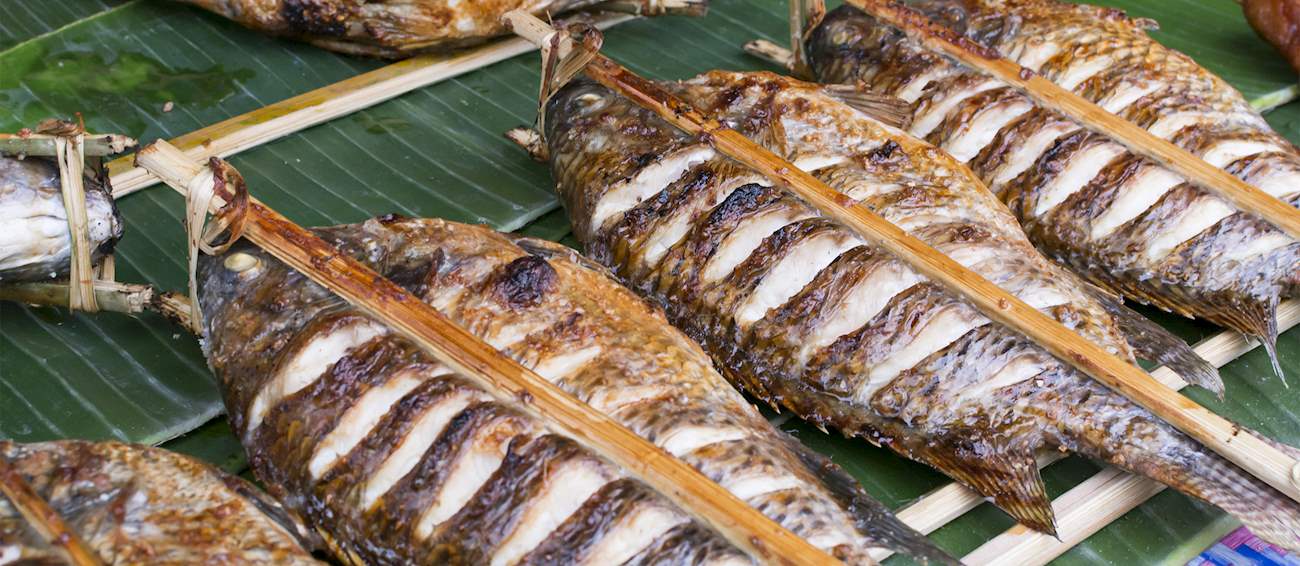Usually associated with Luang Prabang, steamed fish in banana leaves is a dish that combines flaked fish with sticky rice powder, fish sauce, as well as different spices and herbs such as kaffir lime leaves, chili peppers, and lemongrass. The spices are usually ground in a mortar and then incorporated with the fish and other ingredients in a mixture that is neatly wrapped inside banana leaves.
The dish can be placed in whole banana leaves or small, individual-sized parcels, and it usually comes served with rice and a dipping sauce on the side. Although various types of fish can be used, catfish is the most common choice in Laos.
MOST ICONIC Mok pa
View morePing pa is a Lao style of grilled fish, seasoned with local spices and served with another regional favorite, sticky rice. The fish of choice is typically red snapper (or other white-fleshed fish), sprinkled with salt and stuffed with a mix of lemongrass, kaffir lime leaves, garlic, shallots, galangal, fish sauce, and lime juice.
The dish is one of the local delicacies, omnipresent in all food markets and eateries in the capital of Vientiane. For added spiciness, jeow (chili dipping sauce) is often served on the side.
Koi is a raw meat dish that is prevalent in Lao culture and in the northeastern Thailand region of Isan. The most popular iterations of koi are prepared in a way similar to a salad. The basic recipe involves thinly sliced fish (usually locally caught tilapia) with chopped greens (yardlong beans, shallots, and galangal), mixed and seasoned with ground roasted rice, chili flakes, fish sauce, and lime juice.
Although the original version of koi is made with raw fish, it is also acceptable to blanch the fish in boiling water beforehand. This is because some raw fish can transmit liver infections and the blanching process leads to a much safer way of preparing the dish.
TasteAtlas food rankings are based on the ratings of the TasteAtlas audience, with a series of mechanisms that recognize real users and that ignore bot, nationalist or local patriotic ratings, and give additional value to the ratings of users that the system recognizes as knowledgeable. TasteAtlas Rankings should not be seen as the final global conclusion about food. Their purpose is to promote excellent local foods, instill pride in traditional dishes, and arouse curiosity about dishes you haven’t tried.





